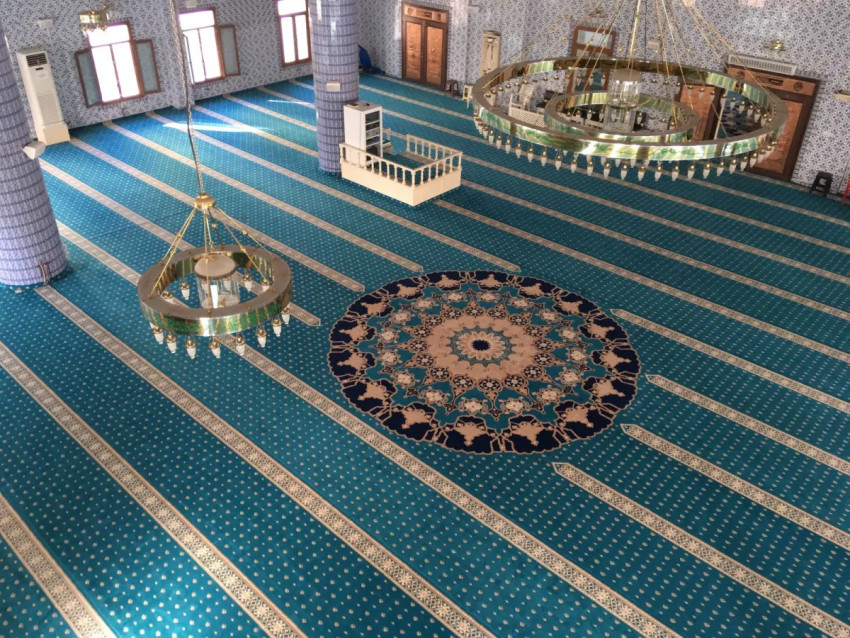
Mosques are hallowed locations for contemplation and meditation that operate as the center of spiritual activity for the Muslim community. A mosque's layout and aesthetics are very important in fostering an environment that encourages prayer and reflection. The carpet of the mosque is one essential component that adds to the atmosphere of these hallowed places. This essay will examine the many uses of mosque carpets, including their ability to elevate prayer areas, provide beauty, and inspire devotion.
Design artistry:
Mosque carpets are artworks that enhance the prayer space's overall visual appeal, not just practical floor coverings. These carpets frequently have calligraphy, floral themes, and complex geometric designs that are influenced by Islamic art and architecture. The painstaking artistry and attention to detail in these designs create an environment that represents the rich cultural and artistic legacy of the Islamic world.
Meaning in Sequences:
Mosque carpets have fascinating patterns that are both aesthetically pleasing and significant. Arabicesques and tessellations are examples of geometric patterns that represent the harmony and order found in Islam. While calligraphy frequently incorporates passages from the Quran or the names of Allah, which evoke a sense of reverence and a link to divine teachings, floral themes symbolize the beauty of creation.
Increasing Focus and Concentration:
An essential component of Islamic worship is prayer, which calls for intense focus and concentration. Mosque carpets are thoughtfully designed with a color scheme that promotes prayer and attention in the space. Tones that are neutral and calm hues provide a peaceful ambiance that makes it easier for worshipers to focus on their spiritual connection without being distracted.
Satisfaction and Honor:
Mosque carpets' plushness and texture make them more comfortable for worshippers to be in during prayers. These carpets offer a hygienic and cozy surface that makes it easy for people to do prostrations. The prayer place is made more hallowed overall by the respect given to the act of praying on a designated and well-kept carpet.
Benefits of Acoustics:
The prayer hall's acoustics are likewise managed by the rugs in the mosque. Because of the soft surface's ability to absorb sound, there are less echoes and a calmer atmosphere overall. This is especially crucial during congregational prayers and preaching, when peaceful surroundings and unobstructed communication improve the entire spiritual experience.
Continuity of Culture:
The Islamic culture has a long history of utilizing carpets in mosques. For centuries, carpets have been an essential component of Islamic art and architecture, and their use in mosques is still a deeply spiritual and cultural tradition. These carpets bridge the gap between the past and present and help worshippers feel more connected to their cultural heritage in contemporary mosques.
Preservation of Purity:
Islam emphasizes the importance of cleanliness and purity, particularly in relation to prayer. Mosque carpets are useful because they cover the floor and keep the space sanitary. These carpets require routine cleaning and maintenance to keep the prayer area tidy and welcoming for believers.
Conclusion:
Mosque rugs are essential elements that enhance the general atmosphere of prayer areas rather than being only decorative pieces. Worshippers' spiritual experiences are elevated by the artistic design, symbolic patterns, and practical features of these objects. Within the hallowed confines of a mosque, these carpets, with their cultural and historical value, are essential in establishing an atmosphere that encourages devotion, introspection, and a close relationship with the holy.





